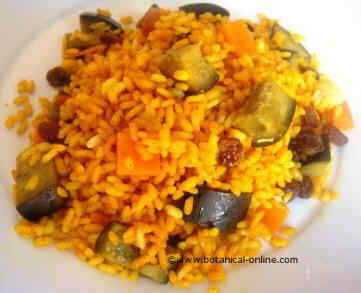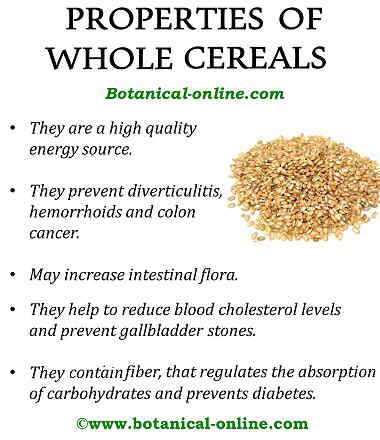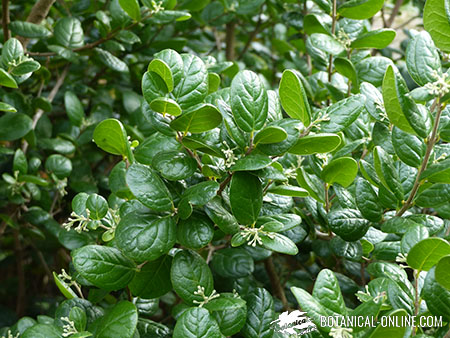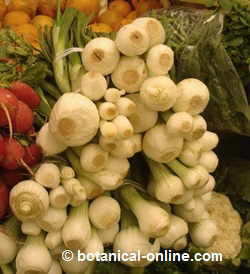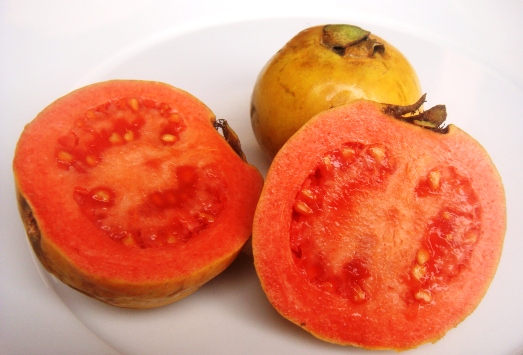Contents
- 1 When you should not eat legumes
- 1.1 CONTRAINDICATIONS OF LEGUMES
- 1.2 Can legumes have contraindications?
- 1.3 What foods are legumes?
- 1.4 Problems of indigestion when eating legumes
- 1.5 How to avoid legumes indigestion?
- 1.6 What happens if I am gassy when eating legumes?
- 1.7 What happens if I have pain while eating legumes?
- 1.8 Intolerance to legumes
- 1.9 Allergy to legumes
- 1.10 Gluten from cereals allergy
When you should not eat legumes
CONTRAINDICATIONS OF LEGUMES
Can legumes have contraindications?
Legumes are a group of diet foods that are very nutritious and energetic, because they contain a large amount of protein, and have a high intake of B vitamins (except B12) and minerals, including potassium, phosphorus , magnesium, calcium, iron and zinc.
The majority of the population tolerates the consumption of these edible seeds. However, although it is true that legumes are a very natural and beneficial food, there are certain cases in which legumes can present intolerances or contraindications.
What foods are legumes?
The following foods are included in the group of pulses:
Problems of indigestion when eating legumes
The main contraindication of legumes is that they can not be eaten raw or undercooked, as they produce digestive disorders related to excessive gas, flatulence, and even stomach pain and cramping. This is because legumes, when raw, are indigestible by nature.
No legume should be eaten raw, except those germinated. Raw legumes contain toxins that are eliminated after soaking them in abundant water and cooking. For example, the ingestion of cakes made with chickpea flour cooked in the oven without water is also responsible for cases of poisoning, known as neurolarythism. On the other hand, eating lupins when they are green (or their sheath) has produced adverse effects such as vomiting, nausea, belly pain, headache, and in some cases, weak pulse, convulsions and cardiorespiratory arrest.
How to avoid legumes indigestion?
To avoid this undesired effect, it is recommended to cook them correctly:

Photo of pea plant with fruit (pod)
- Soak to eliminate their antinutrients (saponins, protease inhibitors, amylase inhibitors, phytates, etc.). These substances produce bad digestions since they impede the complete digestion of the legumes, but they are eliminated with the soaking and the cooking.
- Do not cook with many fats. There are many traditional recipes that cook legumes with abundant animal fats, such as sausages and other processed meats, excess salt, and sugary desserts. This combination leads to a much slower and more troublesome digestion.
- Chew and salivate the legumes well . Chewing allows the digestive juices to penetrate better into the food and therefore it is easier to digest.For this last reason, it may be that people who eat legumes in the form of hummus have somewhat more bothersome digestion, because the fact of eating the legumes mashed implies that they are not properly salted.
Problems with the digestion of legumes
What happens if I am gassy when eating legumes?
Although it is a widespread belief, legumes do not have to produce much flatulence, it is normal to tolerate them well. It is often the case that people who are not accustomed to eating legumes usually experience more gas when they begin to consume them daily or more frequently.
Therefore, the most possible cause of flatulence of legumes is that the body is not used to consuming them. In these cases, as more legumes are consumed, the intestinal flora adapts and no longer causes so much flatulence.
What happens if I have pain while eating legumes?
In case of frequent discomfort when eating legumes, it is recommended to consult a doctor, as there may be a pathology or intolerance to these foods.
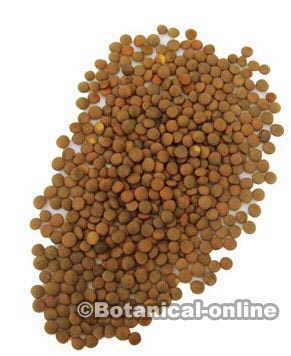
Photo of legumes
Intolerance to legumes
Some people may have intolerance to legumes. Intolerance has the characteristic that manifests itself with digestive symptoms and that these symptoms can be more or less intense depending on the amount consumed.
Intolerance should not be confused with allergy to legume. In these case, although the legume is well cooked, it causes discomfort.
The adequate in these cases, if intolerance is suspected, is to try the legumes that are usually tolerated better, such as lentils, chickpeas and fresh peas (the ones with lower antinutrient content), well cooked, and observe if symptoms occur.
If they are presented systematically, it is recommended to consult a professional.
Favism is a common example of intolerance to legumes, very common among the population of the Mediterranean region, as a consequence of a genetic alteration that causes fava beans not to be tolerated.
Allergy to legumes
Some people may have an allergy to legumes. Unlike intolerance, allergy reactions can be cutaneous, digestive, respiratory, or affect other body systems. These reactions can be very strong, although the food is consumed in a small amount. For this reason, people with allergies to the legume should be very careful not to ingest them.
People with allergies to other grains should be careful because in factories where pulses are processed you can also manipulate other foods that cause allergy, being able to find traces of nuts or seeds in between the legumes.
Gluten from cereals allergy
Although legumes do not contain gluten, they may have been processed in factories that use cereals with gluten, such as oats or wheat. In case of allergy, it is recommended to consult the container for the “gluten-free” seal.
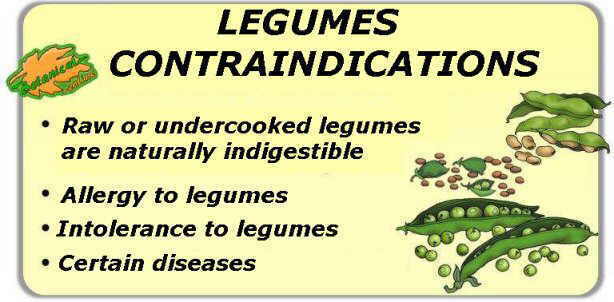 Summary of the main contraindications of legumes: when they are badly cooked or raw they are naturally indigestible. Contraindicated in case of some diseases, allergy and legume intolerance
Summary of the main contraindications of legumes: when they are badly cooked or raw they are naturally indigestible. Contraindicated in case of some diseases, allergy and legume intolerance
* More information:
– Why are legumes so flatulent?
– Remedies for the flatulence of legumes
– How to diminish flatulence in legumes
![]() More information on legumes
More information on legumes



